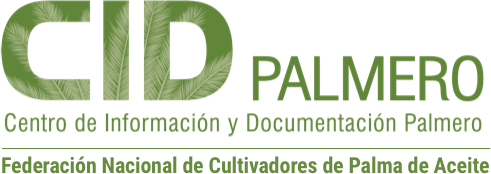Study of Yields in Artificial Pollination in a Plantation in the Southwestern Zone, Colombia, Sowing 2008: Optimization of Labor Productivity

Disponible aquí
Disponible aquí
Disponible aquí
Disponible aquí
Disponible aquí
Disponible aquí
Disponible aquí
Disponible aquí
Disponible aquí
Disponible aquí
Disponible aquí
Disponible aquí
Disponible aquí
Disponible aquí
Disponible aquí
Disponible aquí
Disponible aquí
Disponible aquí
Disponible aquí
Disponible aquí
Disponible aquí
Disponible aquí
Disponible aquí
Disponible aquí
Disponible aquí
Author
Sinisterra-Ortiz, Kelly
Vargas-Medina, Liseth
Camperos-Reyes, Jhonatan Eduardo
Bolívar-Ortiz , Ana
Banguera, Jhon Jairo
Mosquera-Montoya, Mauricio
Estadisticas
Publicación:
Palmas; Vol. 45 Núm. 1 (2024): Palmas; 36-49
2744-8266
Palmas; Vol. 45 Núm. 1 (2024): Palmas; 36-49
2744-8266
Abstract
This study aimed to calculate the yields and costs associated with the task of artificial pollination in a solid medium, in a plantation in the Southwestern Zone. To achieve this, a time and motion analysis was used, along with a cost estimation methodology that considers labor, equipment, and supplies (prices and quantities) required for the task of artificial pollination. Initially, the sequence of activities necessary to perform the task of artificial pollination was established through a process diagram. Subsequently, time records for each activity that makes up the process diagram were collected. Finally, the yields and costs associated with the task were estimated. The results indicate that, in an effective 7-hour workday, an artificial pollination operator covers 4.39 hectares. The unit cost per inflorescence, considering labor, equipment, and supplies, was estimated at $ 380; however, this cost varies according to the amount of inflorescence available to pollinate in the plots (i.e. high density vs. low density). El objetivo de este trabajo fue calcular los rendimientos y los costos asociados a la labor de polinización artificial en medio sólido, en una plantación de la Zona Suroccidental de Colombia. Para ello se empleó un análisis de tiempos y movimientos, y una metodología de estimación de costos que tiene en cuenta la mano de obra, equipos e insumos (precios y cantidades) requeridos en la tarea de polinización artificial. Inicialmente se estableció la secuencia de actividades necesarias para realizar la labor de polinización artificial mediante un diagrama de procesos. Posteriormente se recolectaron los registros del tiempo para cada actividad que compone el diagrama de procesos. Finalmente se estimaron los rendimientos y costos asociados a la labor. Los resultados indican que, en una jornada laboral efectiva de trabajo de 7 horas, un operario de polinización artificial cubre 4,39 hectáreas. El costo unitario por inflorescencia al considerar mano de obra, equipos e insumos se estimó en $ 380; sin embargo, este costo varía de acuerdo con la cantidad de inflorescencias que hay disponibles para polinizar en los lotes (i.e. alta densidad vs. baja densidad).
This study aimed to calculate the yields and costs associated with the task of artificial pollination in a solid medium, in a plantation in the Southwestern Zone. To achieve this, a time and motion analysis was used, along with a cost estimation methodology that considers labor, equipment, and supplies (prices and quantities) required for the task of artificial pollination. Initially, the sequence of activities necessary to perform the task of artificial pollination was established through a process diagram. Subsequently, time records for each activity that makes up the process diagram were collected. Finally, the yields and costs associated with the task were estimated. The results indicate that, in an effective 7-hour workday, an artificial pollination operator covers 4.39 hectares. The unit cost per inflorescence, considering labor, equipment, and supplies, was estimated at $ 380; however, this cost varies according to the amount of inflorescence available to pollinate in the plots (i.e. high density vs. low density).
Palabras clave:
Ácido naftalenacético (ANA),
Productividad
Mano de obra
Híbrido OxG
Palma de aceite
Ácido naftalenacético (ANA),
Productividad
Mano de obra
Híbrido OxG
Palma de aceite
Disponible aquí
Disponible aquí
Disponible aquí
Disponible aquí
Disponible aquí
Disponible aquí
Disponible aquí
Disponible aquí
Disponible aquí
Disponible aquí
Disponible aquí
Disponible aquí
Disponible aquí
Disponible aquí
Disponible aquí
Disponible aquí
Disponible aquí
Disponible aquí
Disponible aquí
Disponible aquí
Disponible aquí
Disponible aquí
Disponible aquí
Disponible aquí
Disponible aquí


